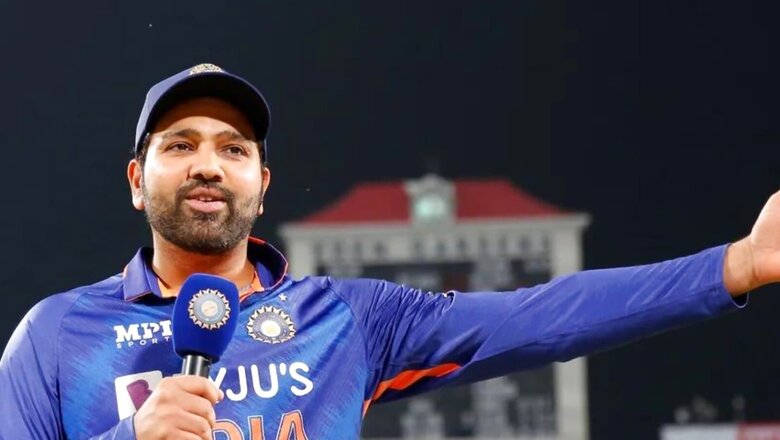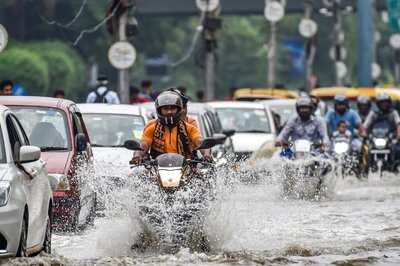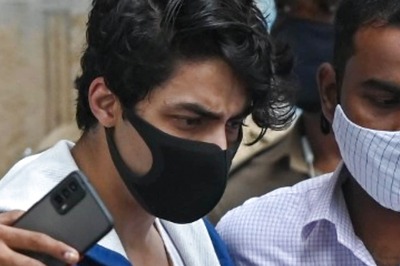
views
Monday evening was abuzz with only one question. Have the selectors chosen a winning squad for the upcoming 2022 T20 World Cup in Australia? It would have been nice to put this up to the selectors themselves, to get their opinion on the same, and understand the logical thinking behind this selection. Unfortunately, such press conferences are now rarer than solar eclipses.
And so, it leaves for us to make sense of it all. To begin with, Ravindra Jadeja is ruled out of the World Cup. One injury has caused so much upheaval in India’s plans, as could be seen in the Asia Cup selections. Jadeja’s freak knee injury has upset India’s balance – both in batting and bowling – and plans must be drawn afresh. Moreover, it places grave importance on Hardik Pandya’s fitness – he should be wrapped in cotton wool until the tournament begins.
Jadeja’s absence implies that Pandya is now India’s fifth bowler and expected to bowl a full quota of four overs. It is not a role he is suited for, as he is more an impact bowler with a two/three-over spell. Earlier, the load of six overs was shared by Jadeja-Pandya, and now the latter must take a higher load. That is, unless, India expects to play a batsman short and pick five full-time bowlers.
Three pacers, two spinners and Pandya is the optimal formula for the – six bowling options, with two all-rounders among the bowling options, giving Rohit Sharma the necessary balance he likes in T20 cricket. Unfortunately, that isn’t possible. Axar Patel is not in the same class as Jadeja, R Ashwin isn’t your typical T20 all-rounder, and Rohit hasn’t relied on Deepak Hooda too much. Maybe the skipper could use Deepak Chahar as a late-order offensive batsman, but he is in the reserves, not in the main squad.
Weirdly enough, Chahar was in the reserves for the 2021 T20 World Cup as well. How does anyone explain this? He is a like-for-like alternative to Bhuvneshwar Kumar, and at their average pace, you can only play one of them. Kumar was unimpressive in the UAE last year, albeit he has built up form and fitness over the last ten months. Chahar was mostly out injured during this time, so you can see why this call.
There are other important factors herein. Harshal Patel and Yuzvendra Chahal are included, and they missed out in 2021. It is an error-rectification, for they are both T20 specialist bowlers. So is Arshdeep Singh, who will be a keen death-bowling ally to Jasprit Bumrah. Both Patel and Bumrah will be under the scanner for fitness reasons, and that’s where Chahar/Mohd. Shami needs to be ready in the reserves.
Yet, barring Bumrah, India is missing outright pace in its attack. On harder Australian wickets, that is going to be key. As for the spin balance, Chahal leads the line obviously and then it depends on how India wants to play its cards. Axar is a potential second all-rounder. Or, play a pacer short, wish Pandya well for his four overs and play Ashwin as an experienced partner to Chahal.
Even so, these are skeletal bowling changes. And India did not crash out of the 2021 World Cup because of bowling. That embarrassment was solely down to its haphazard batting line-up. So, the obvious question to ask here is, what has changed on that front? Not much at all, if you sample the following.
Across the last 12 months, KL Rahul’s strike rate is 136.24 in 12 T20Is. This is lower than his T20I career strike-rate of 140.91. He has scored at a higher strike- rate only on four occasions – against Afghanistan (143.75), Scotland (263.15) and Namibia (150) in that 2021 World Cup, and against Afghanistan (151.21) in the recent Asia Cup. What’s common herein? All four matches were inconsequential for team India.
Let’s consider Rohit and Virat Kohli as well. In the same time period, Rohit has scored at a higher pace (147.36 SR) than his T20I career strike-rate (140.63) in 14 out of 25 matches. Post the 2021 World Cup, he has done it 11 times in 20 T20Is, striking at more than 155 on nine occasions.
Meanwhile, it has been an obvious struggle for Kohli. In 12 T20I innings, his strike-rate (133.64) has dipped below the career strike-rate of 138.37. He managed to cross this threshold only in two innings – 11 off 6 balls against England and then 122* against Afghanistan in the Asia Cup. Take these two out, and his strike-rate falls off a cliff. What do we read from this?
Simply put, the current top-order isn’t an optimal one for India. What’s worse, it is the same top-order that struggled against Pakistan and New Zealand in the 2021 tournament and was the root cause of India’s batting problems. Sure, the team management has addressed this through high-intensity cricket. But lack of form (Kohli), lack of fitness (Rahul) and game management (Sharma) have impeded all three from playing together on most occasions.
Suryakumar Yadav, Rishabh Pant and Pandya complete the primary batting line-up. SKY should be batting higher than number four, but that would mean leaving out one of the top three. How do you do it? Pant has been in middling form in the past 12 months – 130.24 SR in 22 innings with only 422 runs at an average of 28.13. He has been most affected by incessant experimentation with the batting line-up, and now finds himself at a crossroads because his place isn’t assured in the playing eleven.
Dinesh Karthik is an obvious replacement but that would mean no left-hander in the batting line-up. Does Pant play only because he is a left-hander? Matters are made worse because of Jadeja’s injury herein as India must choose one between DK and Pant if they field all of the top three. Even worse, Pandya then becomes the assigned finisher, a role he didn’t perform even for Gujarat Titans in the 2022 IPL.
What is the end conclusion herein? India has gone with much the same batting line-up that didn’t work in 2021. Despite that embarrassing failure, the selectors have again picked the same frontline batsmen for the 2022 World Cup, with only two minor changes from last year. Hooda and Karthik, and it is quite possible that both won’t be first-choice starters. Go figure!
Get the latest Cricket News, Schedule and Cricket Live Scores here


















Comments
0 comment